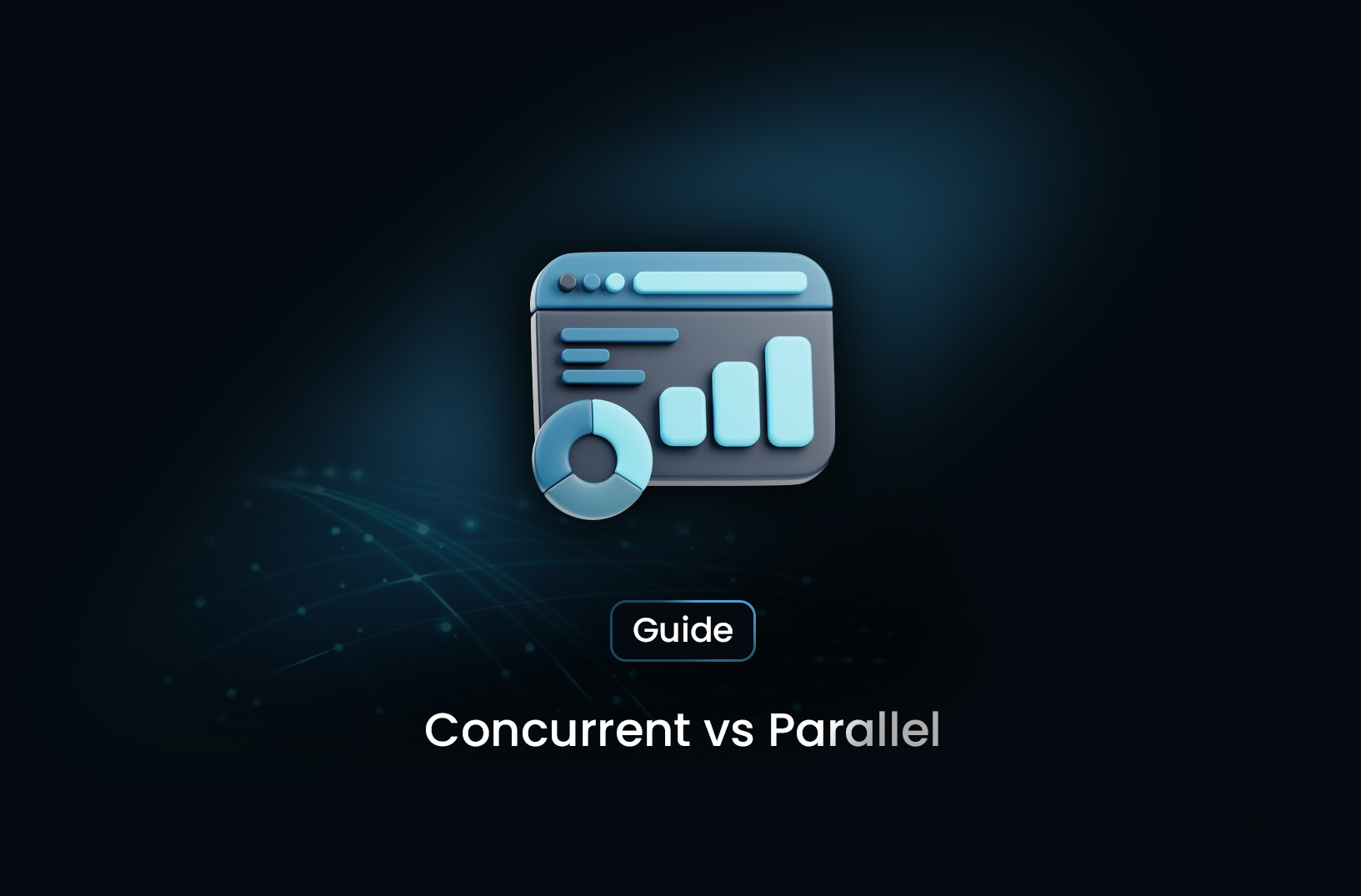Concurrent vs Parallel: What's the Difference?

If you’re stepping into software development, you’ve likely come across the terms concurrent programming and parallel programming. At first glance, they might sound like they’re talking about the same thing—but they’re not. While both aim to make programs more efficient, they tackle tasks in very different ways.
In this blog, we’ll break down these concepts in plain English, show you how they work with relatable examples, and help you understand when to use each.
What is Concurrent Programming?
Concurrent programming is like juggling multiple tasks at once, but not necessarily doing them all at the same time. Think of it as switching your attention back and forth between tasks quickly to make progress on all of them.
For example:
- Imagine you’re cooking dinner while texting a friend. You chop veggies, pause to respond to a text, stir the sauce, and then reply to another message.
- You’re handling multiple tasks at the same time, but you’re not performing both actions simultaneously.
In programming, concurrency allows your application to handle multiple operations by switching between them efficiently. For example, a chat application might process incoming messages, update the UI, and send notifications—all seemingly at once.
What is Parallel Programming?
Parallel programming, on the other hand, is when tasks truly happen simultaneously. It’s like having multiple chefs in the kitchen, each working on a different dish at the same time.
For example:
- You’re making a three-course meal, and you invite two friends to help. One makes the appetizer, another cooks the main course, and you handle the dessert. All three tasks happen in parallel.
In programming, parallelism divides a large task into smaller ones that can run at the same time on different processors or cores. For instance, rendering a 3D image often involves splitting the image into sections and processing each part on a separate CPU core.
Key Differences Between Concurrent and Parallel Programming
| Feature | Concurrent Programming | Parallel Programming |
|---|---|---|
| Execution | Tasks are interleaved, but not necessarily simultaneous. | Tasks are executed simultaneously. |
| Focus | Manages multiple tasks effectively. | Maximizes performance by dividing tasks. |
| Example | Multitasking on a single CPU core. | Running tasks on multiple CPU cores. |
| Use Case | I/O-bound tasks like web servers. | CPU-bound tasks like scientific simulations. |
When Should You Use Each?
Understanding when to use concurrency versus parallelism comes down to your specific use case:
- Use concurrency when your program spends time waiting for something, like reading files, fetching data from the internet, or interacting with users. For example, a web server handling thousands of requests can use concurrency to respond quickly to all users without waiting for one task to finish.
- Use parallelism when your task is CPU-intensive and can be split into smaller, independent pieces. Think of video encoding, image processing, or running simulations—tasks where raw computational power is key.
Real-Life Analogy to Nail the Difference
To make this crystal clear, here’s a simple analogy:
-
Concurrent Programming is like a single cashier at a busy store helping multiple customers. The cashier takes one customer’s payment, pauses to check on another’s item price, and then returns to complete the first customer’s transaction. Everyone eventually gets served, but not all at the same time.
-
Parallel Programming is like having multiple cashiers at the store, each serving a different customer at the same time. The workload is distributed, so more people are served simultaneously.
How Developers Use Both Together
Here’s the cool part: concurrency and parallelism are not mutually exclusive. They often work together.
Take a web browser, for example:
- Concurrency ensures it can download multiple files and let you scroll through a page at the same time.
- Parallelism kicks in when it renders the page by breaking it into sections and processing them on different CPU cores.
By combining both, you get an app that feels fast and responsive.
Conclusion
While concurrency and parallelism tackle different problems, both are essential tools for developers looking to create efficient, high-performance software. Whether you’re building a responsive web app or crunching massive datasets, understanding the difference between these two concepts will help you choose the right approach for the job.
So, next time you hear concurrent vs parallel programming, you’ll know exactly what it means—and when to use it. Happy coding!
Table of Contents
Take a Taste of Easy Scraping!
Get started now!
Step up your web scraping
Find more insights here

How to Find Competitor Pricing: a Comprehensive Guide
Discover the best methods to track and analyze competitor pricing using web scraping and other market intelligence strategies.

Inbound Lead Generation: A Complete Guide for Businesses
Inbound lead generation is the process of attracting potential customers through content marketing, SEO, and organic engagement.

Demand Generation vs. Lead Generation: Key Differences and Strategies
Discover the key differences between demand generation and lead generation—and how web scraping with MrScraper can boost both strategies effectively.


@MrScraper_
@MrScraper